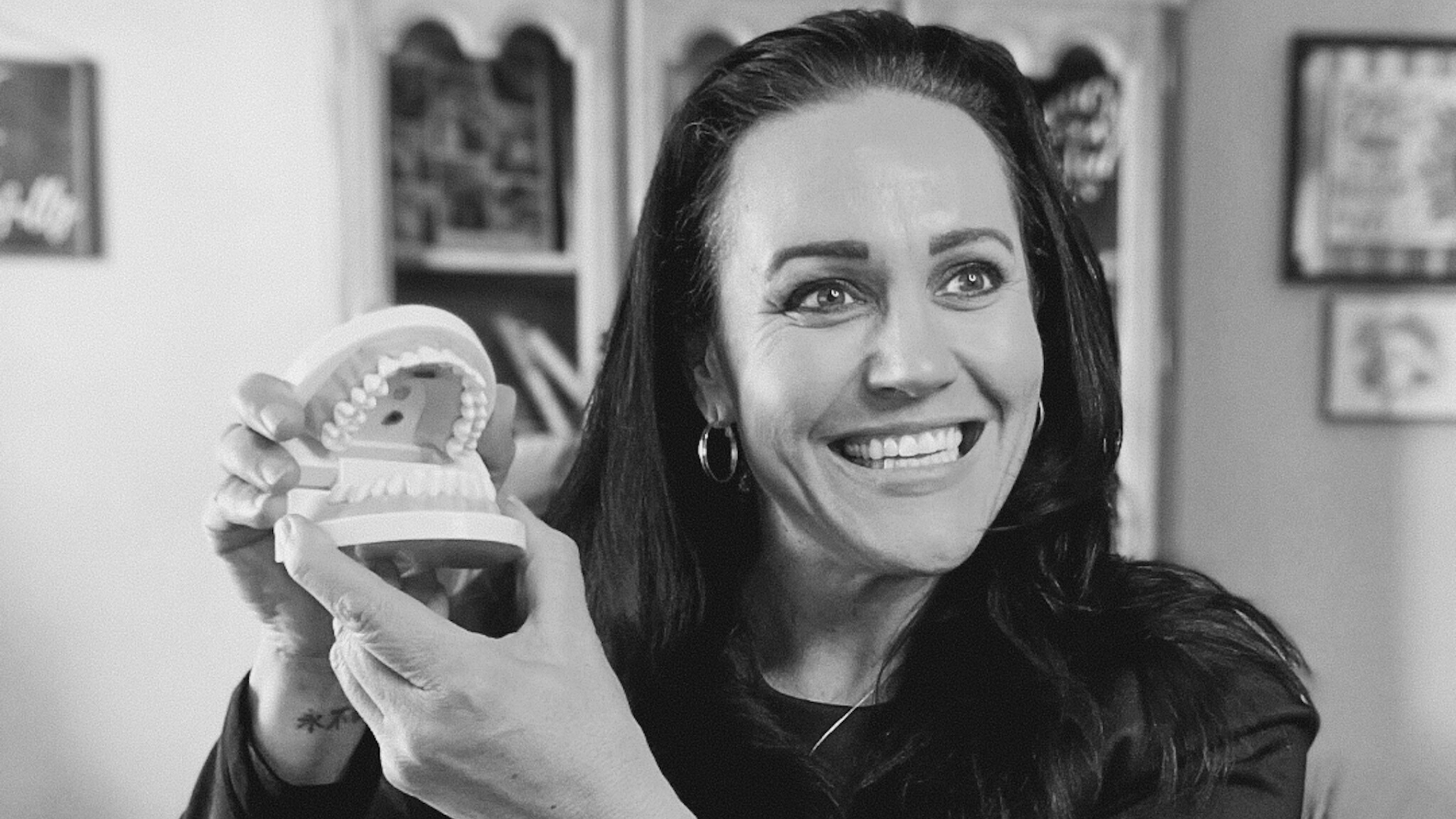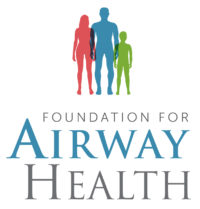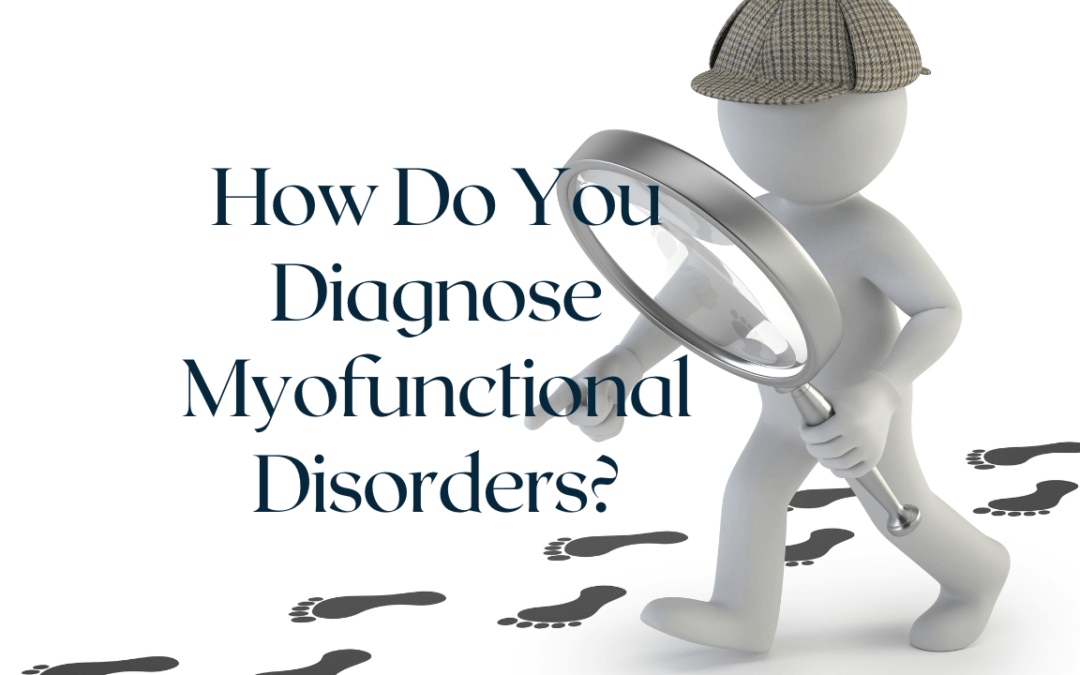How do you diagnose orofacial myofunctional disorders?
Why are you here and where do you want to go?
First and foremost, let’s establish the purpose of your exam visit. Why are you seeking assistance, and where do you envision your health journey taking you? Understanding your goals provide us with a roadmap for crafting a personalized therapy plan. Are you struggling with speech, sleep apnea, or jaw pain? Knowing what you want to fix helps us tailor your therapy plan to meet your unique needs.
Orofacial Myofunctional Disorders: What does your “symptom burden” look like?
A crucial step in the diagnostic process is assessing the symptom burden you carry. From difficulties in swallowing to tongue ties, we meticulously explore the manifestations of orofacial myofunctional disorders. By understanding the symptoms you experience, we can uncover underlying issues and develop targeted strategies for improvement. Many of our clients have a huge symptom burden but are blind to it until we educate them. Just because you’ve had symptoms for as long as you can remember doesn’t mean they are normal.
What about things like…
- Crooked teeth
- Snoring
- Sleep apnea
- Mouth breathing
- Tongue ties
- Chronic exhaustion
- Digestive issues
- Poor sleep
Just because something is COMMON doesn’t make it NORMAL!

What does your oral function look like?
Your oral function will play a pivotal role in diagnosis. We examine aspects such as tongue posture, tongue range of motion, breathing and how the orofacial muscles work. Dysfunction in these areas is what contributes to orofacial myofunctional disorders. By scrutinizing your oral function, we gain insights that we use to formulate effective treatment plans. Your medical provider might have no idea how to assess the oral function, so just aheads up! (This is why you want to start with an exam.). If you ask your doctor if “you have a tongue tie” and he or she says “stick out your tongue”…this doesn’t constitute an oral function assessment. It simply means that you can stick your tongue out, but are you doing it correctly? What about retraction? What about lateralization? What about posterior or mid-blade elevation? Doctors completely miss the mark if all they do is have you move your tongue around. Remember that tongue ties aren’t diagnosed by appearance anyhow. They are diagnosed by oral function and tongue range of motion.
Who else do we need on your comprehensive healthcare team to help treat orofacial myofunctional disorders?
Holistic well-being requires a collaborative approach. In building your comprehensive healthcare team, we consider various professionals such as dentists, orthodontists, speech therapists, allergists, ENT’s, chiropractors and physical therapists. Each team member brings unique expertise to the table, ensuring a well-rounded approach to addressing orofacial myofunctional disorders. Collaboration fosters a supportive network that empowers you on your healing journey.
How to diagnose your orofacial myofunctional disorders?



Meet Carmen Woodland
Carmen found this path of passion years ago as a dental hygienist. After a stint in graduate school to earn her M.B.A., she decided that she needed to pivot. Her heart was no longer in scraping teeth, but making a much bigger impact on lives touched by myofunctional impairment.
Her story is personal and close to home as her sweet granddaughter, Linzee, was passed back and forth amongst doctors and therapists for years trying to figure out her speech, breathing, sleep, chewing and swallowing issues. It wasn’t until Carmen completed her post graduate myofunctional therapy training that she knew Linzee’s problem was a significant tongue-tie. Bingo.
Fast forward to now. Carmen is a crusader. A warrior. A voice for those who can’t find theirs, or who don’t have one.
She left clinical hygiene practice to start Impact Myofunctional Therapy. It has evolved from a way to make a living, into an obsession!
Carmen and her associates see clients all over the world and provide innovative, virtual therapy in the remotest of places.
In addition, Carmen also
- Teaches other dental hygienists, speech therapists & dentists how to implement myofunctional therapy through the Myofunctional Therapy Training Academy.
- Coaches dental offices on how to implement myofunctional screening into the daily practice
- Speaks in various settings
She is an airway provider for the Foundation of Airway Health, where she works diligently for the recognition, diagnosis, and treatment of airway-related disorders.
And last but not least, she is a proud member of several professional associations that afford her the opportunity to continue learning so that her team can help you. Her professional memberships include:


